We’re all familiar with Xiaomi’s status as one of the most popular budget phone makers in the Asian market. The Chinese giant offers you a value-for-money package with its budget devices, running a forked version of Android called MIUI. While many users love MIUI and its superior customization abilities, there are some who still hope for a stock experience in conjunction with the brilliant hardware and price. This is where Google stepped in to save the day. Google recently partnered with Xiaomi to revive its once-forgotten Android One program with the launch of Xiaomi Mi A1.
Unlike the previously released Android One devices, which were quite sub-par due to hardware restrictions, the Mi A1 is a great mix of hardware and software for a really attractive price of ₹14,999. We’ve heard users singing praises for the device over the past few week, so I decided to put the Mi A1 to the test myself. Read this in-depth review to know everything about my experiences with the device:
Specifications
Before we take a detailed look at Xiaomi’s Mi A1 in the flesh, let us quickly check out the specifications of the device:
| Dimensions | 155.4 x 75.8 x 7.3 mm |
| Weight | 165 g (4.41 ounces) |
| Display | 5.5-inch FHD LCD display, with 1920 x 1080p resolution |
| Processor | octa-core Snapdragon 625 processor, clocked at 2.0GHz |
| GPU | Adreno 506 |
| RAM | 4GB |
| Storage | 64GB, expandable up to 128GB via MicroSD card |
| Primary Camera | dual 12MP wide-angle + 12MP telephoto lens, with two-tone flash |
| Secondary Camera | 5MP, with f/2.6 aperture, beautify and facial recognition |
| Battery | 3,080 mAh |
| Operating System | Android 7.1.2 Nougat |
| Sensors | Fingerprint, Infrared, Ambient Light Sensor, Gyroscope, Hall and Proximity sensor, Accelerometer |
| Connectivity | VoLTE, Wi-Fi 802.11 a/b/g/n/ac, Wi-Fi Direct, Bluetooth 4.2, GPS, GLONASS, BeiDou |
| Ports | USB Type-C, 3.5mm headphone jack |
| Colors | Black, Gold, Rose Gold |
| Price | ₹14,999 |
What’s In The Box
As we’ve come to expect from Xiaomi phone unboxings, the retail packaging of the Mi A1 didn’t come with any huge surprises. The device was sitting on the top as usual, with the charging brick and cable tucked away in a neat rectangular box underneath. The box also included the SIM ejector tool and user manual but no complimentary accessories were to be found. Xiaomi could at least include a screen protector or protective case with their devices like it used to do back in the day.
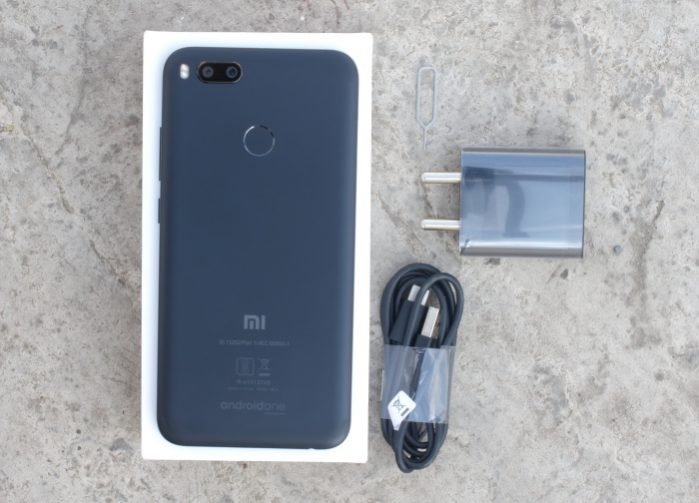
Here’s everything you get inside Xiaomi Mi A1’s retail packaging:
- Mi A1 (obviously, you cannot miss this one)
- 5V Power Adapter
- USB Type-C Cable
- User Guide
- SIM ejector tool
Design and Build Quality
The moment you pull the plastic wrapping off the Mi A1 and take it in your hand, you won’t feel as though you’re holding a budget phone. Xiaomi has made use of, yes you guessed it right, aluminum to carve out the structure of the sturdy Mi A1 device. The Chinese giant has, however, put very little thought into the design of the device and it now looks to have copy-pasted the iPhone 7 Plus or OnePlus 5 design.

The Mi A1 rocks a pretty solid build and feels quite comfortable in the hand but not as good as the Moto G5s Plus, to be honest. The Moto G5s Plus shows off an original design, even when it is also carved out of metal. The rounded camera bump, a placeholder for the dual-lens setup and flash, above the “Moto” logo in the dimple on the rear looks stunning.
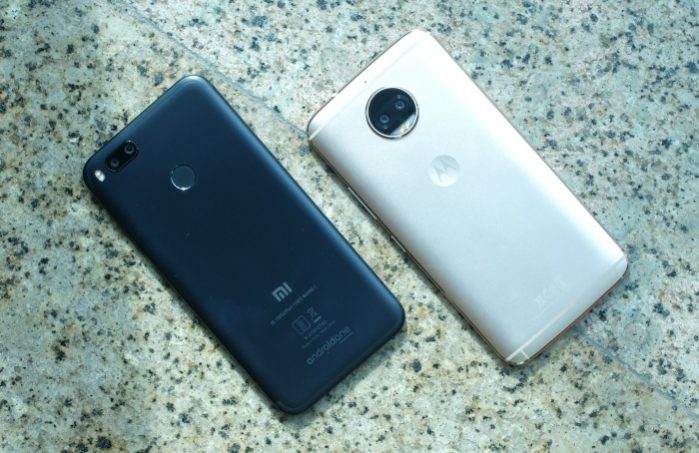
You get a large 5.5-inch Full HD display, which sadly does not boast of the trendy new 18:9 aspect ratio. Xiaomi has stuck with huge top-bottom bezels and physical navigation buttons, providing you with a power key and volume rocker on the right and hybrid dual-SIM tray on the left. The buttons are not at all squishy and it is a pleasure to use them.
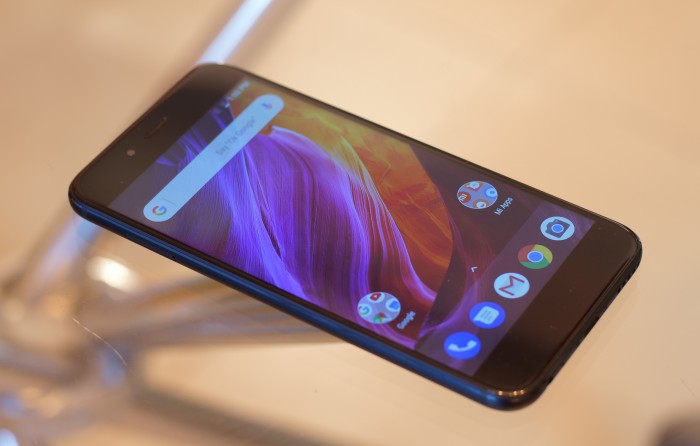
The rear of the device packs a dual camera setup, much similar to the iPhone 7 Plus in looks and a decently fast fingerprint sensor at the center. This is my favorite position for the biometric sensor as my index finger naturally rests at the said position. The Moto G5s, on the other hand, places the fingerprint sensor in the front on the bottom bezel. It may make it easy to unlock the phone when it’s laying flat on the table and that’s all.

The Mi A1 also includes a 3.5mm headphone jack, which is steadily becoming a luxury in phones and USB Type-C charging port that is amazing to have at this price point. The addition of the latter to the Mi A1 could inspire other budget phone makers to update their charging ports in their next-gen device launches.

The curvaceous metallic structure of the Mi A1 may feel quite good in the hand and prevent fingerprint smudges but it is really slippery. I was in constant fear that the device will slip through my fingers any instant but thankfully it didn’t. This also made the usage of Mi A1 with a single hand a nightmare and stock Android is what saved me. I no longer needed to reach out and pull down the notification shade as I activated fingerprint gestures to simplify this task. Thus, I’d recommend you to put a case on the device the moment you buy it.
Display
The Mi A1 sports a 5.5-inch Full-HD display, which is great but definitely not the highlight of this device. Xiaomi hasn’t compromised a bit on this front and incorporated a super-bright LTPS (Low-Temperature Poly-Silicon) LCD display, which has a larger pixel density and low power consumption as compared to other LCDs, on the Mi A1. It is not as good as an AMOLED panel but it didn’t hinder my usage on the daily basis.

I’d have much preferred to see a larger 18:9 display on a device launching in the second half of 2017 but I have no qualms with the panel on the Mi A1, which is much better than previous budget devices released under the Android One program. It boasts of a display resolution of 1920 x 1080 pixels, adding up to a PPI of around 403.
The touch was extremely responsive and I didn’t encounter any unusual problems with the display. The screen was super bright indoors, as well as outdoors, without any color fading that’d have made reading the screen a huge chore. The Chinese giant boasts that the LCD display on the Mi A1 has 1000:1 contrast ratio and can get as bright as 450 nits, which proved to be quite true during my tests.
User Interface
Without a doubt, the highlight of the Mi A1 is its stock Android experience that most users tend to crave on their bloatware-laden smartphones. The Mi A1 is running Android 7.1.2 Nougat out of the box, with an update to Android Oreo promised by the end of this year.

While you may expect a bloat-free experience on the Mi A1, it still comes with a handful of Mi apps in tow. You can, however, choose to uninstall the Mi apps, except the default camera app, if you wish so. The camera app has been developed by Xiaomi to support the dual-lens setup since Google Camera cannot do the same.

While there have previously been doubts about whether Xiaomi will be able to deliver the Oreo update in time, the Chinese giant has now confirmed that the update is coming very soon. It has started recruiting beta testers to check out the Oreo update before its official release, if not this year then in January for sure.
The delay in the release of Android Oreo is possibly because of the time Xiaomi is taking to optimize all of its apps for the current API, especially the camera app. It has also promised that Mi A1 will also receive Android P when it becomes available but nothing can be said at the moment. We’ll just have to wait and see if that turns out to be true. The current UI is stock Android and looks like this:
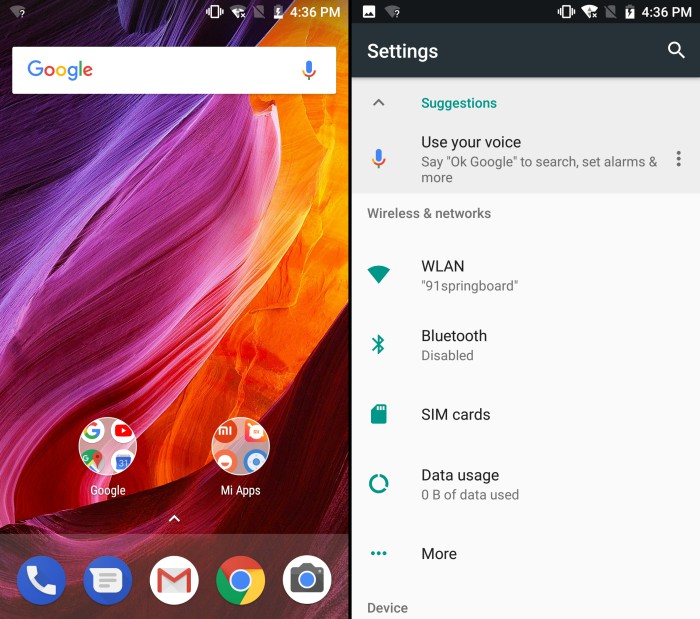
Performance & Benchmarks
Since the Mi A1 lies square in the mid-range segment for Xiaomi, the device is powered by the octa-core Qualcomm Snapdragon 625 chipset yet again. Clocked at 2.0Ghz, this is possibly the 4th Xiaomi smartphone lineup to be powered by this chipset but there have been no potential complaints about the same. The performance of the Mi A1 is top-notch and why wouldn’t it be when the software is stock and clean to the core. Here are a few benchmark results to reiterate this point:
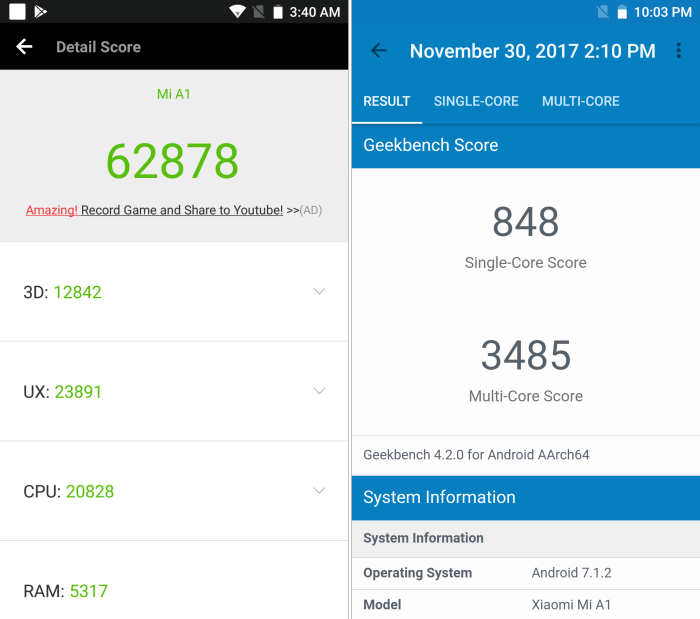
My hands-on experience with the Mi A1 has been mostly positive, with negligible lags or frame drops under normal usage. Even heavy games run quite comfortably but the Mi A1 tends to heat up a bit over the said period of time. There is another nagging issue that I faced a couple odd times during the one week I had with the device. The Mi A1 randomly reboots out of the blue and it was extremely frustrating when it did that in between app switches.
The Mi A1 wants to be your first choice in this budget segment, thus, it is not offering you multiple alternatives for the RAM and storage combo. Xiaomi knows well enough that our average media creation and consumption has now increased, so we only need the highest specs for our daily drivers. The Mi A1 comes with 4 GB of RAM and 64 GB of internal storage but you can still upgrade the storage by up to 128GB using a MicroSD card. This will come in handy when you’re out shooting 4K videos or high-resolution pictures.
Cameras
Falling in line with the ongoing trend, the Mi A1 sports a dual-lens rear camera setups, that is quite similar to the one we’ve already seen on the iPhone 7 Plus previous year. You get a 12-MP wide-angle and telescopic lens on the Mi A1, with f/2.2 and f/2.6 aperture respectively. The device doesn’t use the stock Google Camera app but instead, it includes Xiaomi’s own camera app because Google Camera does not include native support for dual lenses on the software front.
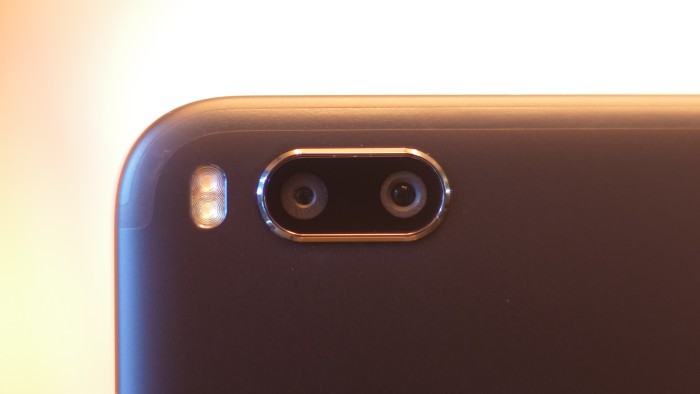
While capturing casual photos, Xiaomi’s camera interface is quite intuitive and easy to like. The colour reproduction and sharpness of the photos captured with the dual-lens system in the daytime are on-point. The secondary telescopic lens makes it simpler for you get closer to subjects but does introduce some noise in the pictures. The shutter speed is good and no major lag was detected while clicking photos but the same cannot be said for the app when using the portrait mode.


The camera app becomes unresponsive for a couple odd seconds when clicking a portrait shot, which can get on your nerves if you plan to capture multiple pictures. The portrait mode on Mi A1 is comparable to Xiaomi’s current flagship device Mi 6, which has received high praises, in general. The bokeh (blur) effect is a little too overpowering, but the camera is doing a good job in edge detection and sharpening the subject in focus.


The said camera system is better than any other dual-lens setup that’s available in the under ₹15k price segment, especially the Moto G5s. It, however, fails to focus on the subject sometimes but a quick restart does help solve the issue. The camera does not perform equally well in low-light conditions but it does capture some decent photos for the price point. Here are few samples:


As for the selfie camera, it is a single 5-megapixel shooter that’s half-decent. You’ll be able to capture some good shots, including group selfies if the lighting conditions are right but I would suggest you not get too used to the ‘beautify’ mode as it alters your photo quite a lot. However, without it, the camera softens the image and the dynamic range isn’t good enough. Here’s how images clicked with and without the beautify mode are as under:


Also due to the smaller f/2.6 aperture of the front lens, the Mi A1 doesn’t capture the best selfies in low-light conditions. The facial recognition feature, on the other hand, seems to have improved a lot as compared to my oh-so-old Redmi Note 3. The video recording capabilities of the Mi A1 are undoubtedly great because you can now capture 4K resolution videos using the dual-lens rear camera setup. The output is quite good but the lack of OIS or EIS is surely visible in the form of some abvious shakiness.

Audio and Telephony
After spending around a week with the Mi A1, it is only fair to say that you wouldn’t see any major signal loss or interference during calls. The audio quality is quite crisp and the earpiece is loud enough for you to easily hear the caller. Audio calls sounded equally well on both sides, thanks to the noise cancellation microphone up-top.

The Mi A1 includes a bottom-firing speaker and this is not the perfect placement for the same. Xiaomi should’ve stuck with its usual rear placement of the speaker as it’s now quite easy for the hand to cover the small speaker at the bottom, muffling out all the sounds while playing games or watching any video/movie in landscape mode.
The speaker is decently loud with not as much bass as you might have expected. The stock Android could do with more volume steps in audio controls to make it easier for users to control the experience and not burst your eardrums all of a sudden.
Connectivity
Like any device in the budget segment for the Asian market, the Mi A1 includes the usual set of connectivity options. You’ll get the hybrid dual-SIM tray, where you can either choose to use two SIM cards or couple a single SIM card with a MicroSD card. The device supports major compatible networks, along with VoLTE support for those providing the functionality. I was able to test the same with my Reliance Jio SIM card and everything worked buttery smooth.
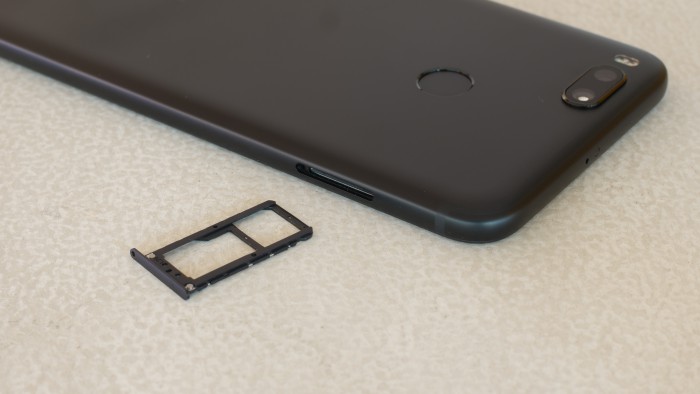
The device also supports the latest Wi-Fi 802.11a/b/g/n/ac, along with Wi-Fi Direct which makes it simpler to print, share, sync and stream content to other devices. Bluetooth 4.2, which is not the latest protocol is also included in this device, along with HID (Human Interface Device) profile that’s been designed to provide a low latency link, with low power requirements.
And like other Xiaomi phones, you also get an IR blaster that can be used to control devices around the house. You can use the Mi Remote app, which comes pre-loaded on the device, to control the TV, set-top box, air conditioner and more. It really does come in handy as I no longer need to squander around for my remote and can control the TV with my phone itself.
Battery And Charging
The size of the battery pack is one of the first things that we need a check mark against to consider buying a smartphone. The Mi A1 includes a decent 3,080mAh non-removable lithium-ion battery pack that is enough to easily last you a whole day without having to plug-in to charge the device. In all my time with the Mi A1, the device survived a whole day on medium to high usage, with some charge left to spare. I got a total screen time of about 4-5 hours, which is definitely good for a budget device.

Though the smaller battery pack lasted me an entire day, thanks to stock Android’s Doze and battery optimization features, but charging the Mi A1 is still a chore. I’m happy that Xiaomi is adopting the USB Type-C standard with the Mi A1 but has left quick charging out of the mix. The device takes a couple odd hours to fully charge but it will have been perfect with quick charging, which would have made it possible to sneak in a quick charge when you’re about to go out.
Is Xiaomi Mi A1 The Best Budget Android Smartphone?
As we’re nearing the end of 2017, you may be looking to replace your current smartphone with a brand new one in the coming weeks. If your budget is low and you’ve been scouting for a good mid-range device then Mi A1 could be the perfect device for you. This is also the best time to go out and buy the device as it’s available at a handsome discount right now.
Compared to its competitors, the Mi A1 shines quite bright and stands out from the crowd with its superior and intuitive user experience. The stock Android ROM loaded on the Mi A1 does help but the overall build quality is also a major contributing factor for the same. The Mi A1 packs a powerful processor, dual-lens rear cameras and vanilla Android for ₹15,000, which is a bang for the buck in my opinion. But, if you’re looking for other options, you will surely have stumbled upon competitors like Moto G5s Plus and Honor 7X.
While the Moto G5s Plus at ₹15,999 is very much similar to the Mi A1 in terms of power and features, it is rather bulky and the protruding camera doesn’t look the best. Honor 7X, on the other hand, starts at ₹12,999 could lure users away from Mi A1 with its taller 18:9 display but you will not get the intuitive stock Android experience on the same. Thus, Mi A1 is definitely the best pick in the budget segment at this moment.
Pros:
- Undoubtedly, the stock Android experience
- Great Portrait mode pictures
- Presence of the 3.5mm headphone jack
- Excellent pricing
Cons:
- Quite slippery in the hand
- No Android 8.0 Oreo update yet
- Sudden reboots, out of the blue
Buy Xiaomi Mi A1 (₹14,000)
SEE ALSO: Xiaomi Starts Android 8.0 Oreo Beta Testing
Xiaomi Mi A1: Android One Done Right
While Google has done its part to revive the Android One program, Xiaomi is changing the status of this forgotten program by providing you with a premium experience for a bargain. It has broken the sodden mold that was previously defined by Google and built a device for anyone looking to get away from a skinned version of Android (or iOS, for that matter).
Mi A1 is one of the most premium devices available for ₹15,000 in the Indian market. Do you plan on purchasing the Xiaomi Mi A1? If yes, what’s the prominent factor that pushes you to make this decision? Let us know in the comments section down below.













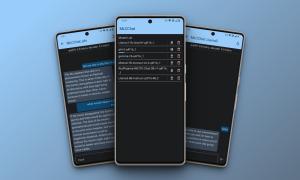


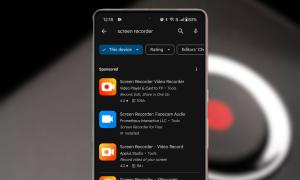
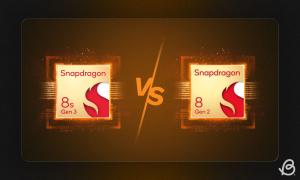
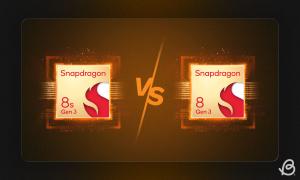
Sudden reboots, out of the blue….. No way never. Very much misleading and an absolute bullshit. I been using this phone for past three months now and not even once have I seen a sudden reboot.
Informative Blog , Mi A1 is notably the most premium phone, both in terms of looks and build as well as in terms of hardware specs, to launch under Google’s Android One program.
Read this review from my MI A1
What abt honor 7x .?will it be the best to beat mi a1.?
No way. Honor’s hardware is not as powerful as sd 625.
For GAMERS, NO.